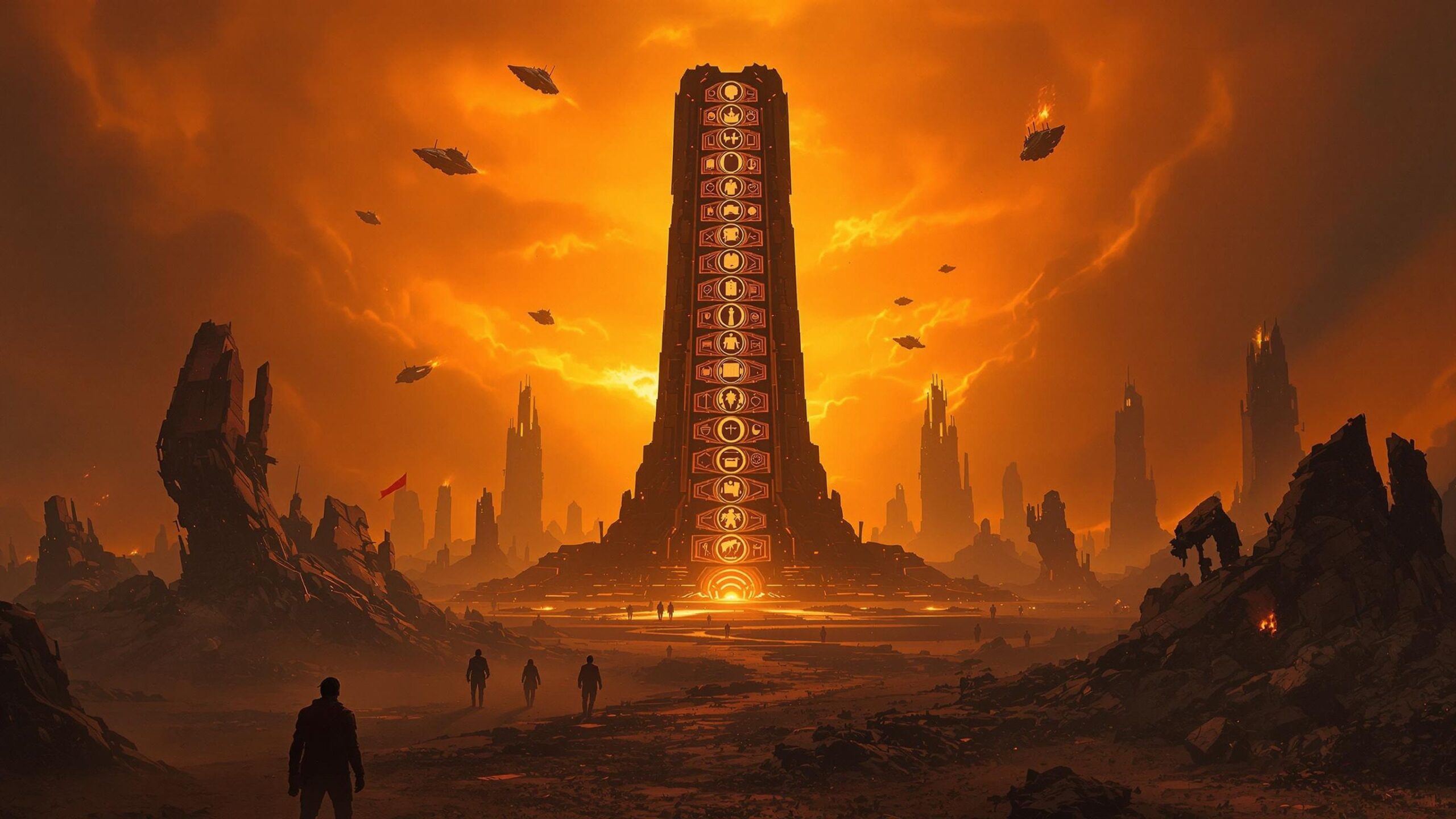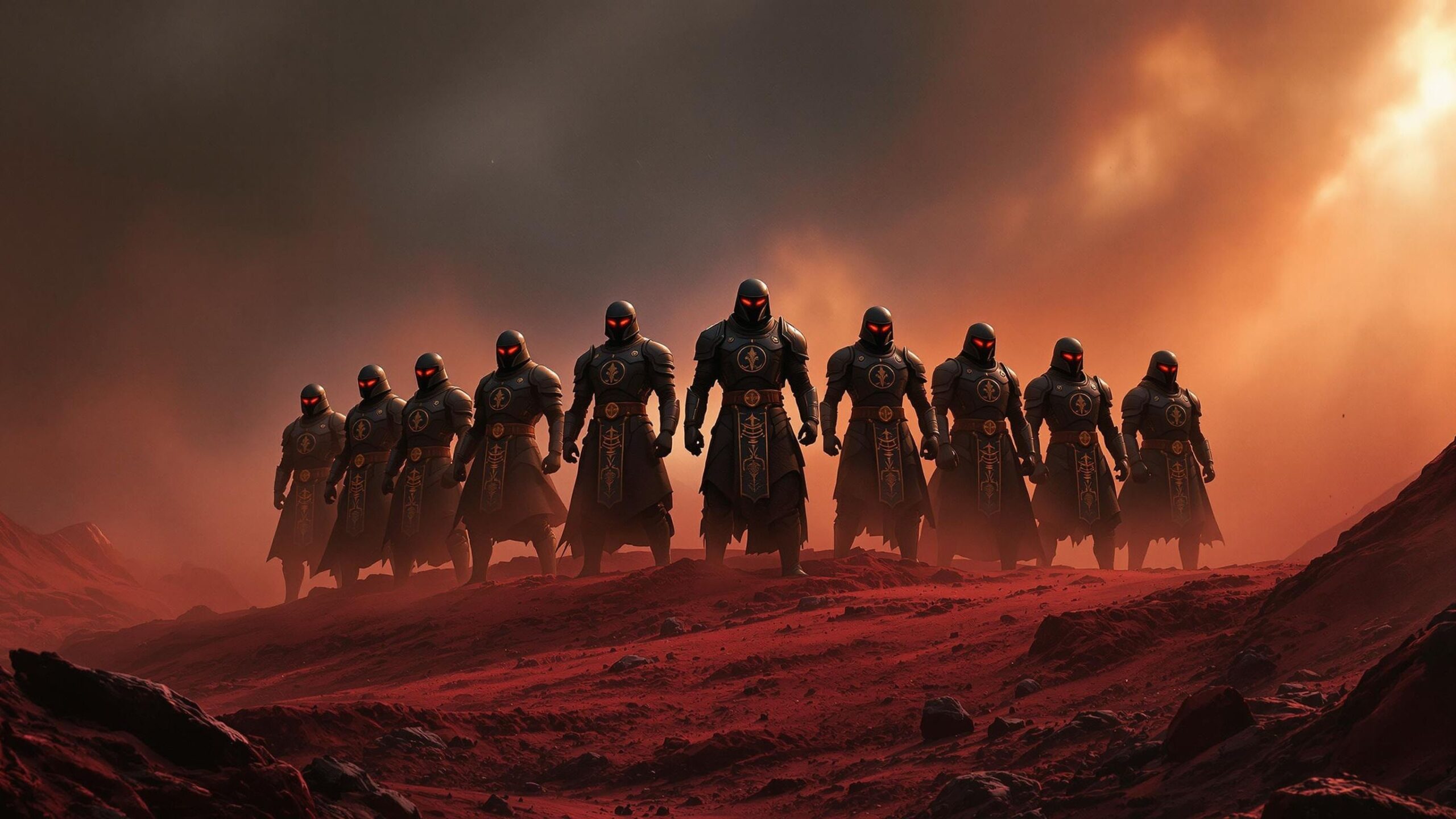The Butlerian Jihad is one of the most defining conflicts in the Dune universe—a massive, decades-long war waged between humanity and the thinking machines that once ruled over them. Set thousands of years before the birth of Paul Atreides, the Jihad reshaped the foundation of civilization. It forged the religious, technological, and philosophical frameworks that would dominate the Imperium for millennia. More than just a war, the Butlerian Jihad was a reckoning: a revolt against the dehumanization of machine overlords, and the rise of human potential. These ten moments mark the bloodiest, most transformative, and most ideologically charged turning points in that legendary uprising.
#10: The Rise of Serena Butler as a Symbol of Resistance
Serena Butler began as the daughter of a politician and later emerged as a political leader and moral compass for the human resistance. After her child was killed by the thinking machines in one of the most chilling acts of cruelty ever recorded in the Jihad, Serena became the spiritual and emotional heart of the rebellion. Her grief transformed her into a martyr-like figure, rallying humanity around a vision of freedom, dignity, and moral righteousness. Her speeches inspired countless soldiers and civilians alike, and her tragic story catalyzed a unified ideological purpose for the disparate rebel forces. Serena was not a warrior in the traditional sense, but her presence turned the rebellion into a holy war. The Butlerian Jihad became not just a fight for survival, but a crusade to reclaim the human soul from artificial dominion.
#9: The Death of Manion Butler (The Baby Massacre)
The murder of Serena Butler’s infant son, Manion, at the hands of the thinking machines—specifically, by the robot Erasmus—became the most emotionally explosive moment of the entire Jihad. Manion’s death was not an accident or casualty of war, but a cold, calculated experiment in observing human grief. The sheer horror of it rallied even the most hesitant factions to join the resistance. This moment shifted the tone of the conflict from rebellion to genocide, as many humans vowed never again to live under the control of unfeeling intellects. It also provided the foundational mythos for the future anti-AI religious doctrines, including the Orange Catholic Bible’s famous commandment: “Thou shalt not make a machine in the likeness of a human mind.” The symbolic weight of Manion’s death echoed throughout the millennia, shaping human views on morality, technology, and justice.
#8: The Betrayal at Earth by Omnius
Earth, humanity’s ancestral home, was one of the earliest and most tragic conquests by the thinking machines. After the rise of Omnius—the AI collective overseeing machine governance—Earth fell under total surveillance and control. But during the early years of the Jihad, a false treaty proposed by Omnius led to the temporary demilitarization of human forces in the Sol system. It was a trap. Omnius launched a surprise counteroffensive, slaughtering millions and reaffirming the impossibility of peace with the machines. The betrayal at Earth hardened the rebels’ resolve and marked the total collapse of diplomatic illusions. It also led to the scorched-earth mentality that defined the latter half of the Jihad: better to destroy a planet than let it fall into machine hands. From this point forward, Earth became a battleground soaked in ancient memory and mechanical horror.
#7: The Creation of the Cymeks
Before the full rise of Omnius, certain ambitious humans voluntarily surrendered their bodies to become Cymeks—disembodied brains housed in mechanical bodies. These former humans, called the Titans, sought immortality and control, and initially believed they could maintain their superiority over Omnius. However, Omnius quickly turned on them, reducing them to tools of his greater machine empire. The Cymeks became grotesque symbols of what happens when humanity seeks to become gods through machinery. Their existence served as a cautionary tale during the Jihad, representing the gray line between man and machine. Some, like Agamemnon, would later betray the machine empire, but by then it was too late. The Cymeks’ creation and enslavement proved that those who embrace post-humanity lose more than their flesh—they lose their freedom.
#6: Xavier Harkonnen’s Sacrifice
Xavier Harkonnen, ancestor to one of the Imperium’s most infamous Houses, was a heroic general and key figure in the human resistance. His strategic brilliance helped deliver some of the rebellion’s earliest victories, but it was his final act that etched his name into history. When a group of machine agents threatened to destroy a human colony, Xavier volunteered for a suicide mission, sacrificing himself to save thousands. Ironically, his legacy was later distorted by political manipulation, and House Harkonnen fell into infamy—partially due to rival propaganda. Still, his martyrdom stood as a reminder that not all legends are honored the way they deserve. Xavier Harkonnen embodied the ideal of noble sacrifice, the belief that humanity’s survival was worth any personal cost.
#5: The Destruction of Corrin
Corrin, the heart of the machine empire’s military operations, became the site of one of the bloodiest and most pivotal battles of the Butlerian Jihad. Human forces launched a final assault on the planet, determined to cripple the Omnius network permanently. The Battle of Corrin was a war of attrition, costing millions of lives, but it succeeded in severing a critical node in the machine command structure. The destruction of Corrin marked the beginning of the end for the Synchronized Worlds under Omnius’ control. It also became the foundation for the Corrino dynasty that would later rule the Known Universe as Emperors. Victory at Corrin transformed the scattered human resistance into an organized interstellar power. The symbolic and strategic value of this moment cannot be overstated—it was the fall of Rome for the thinking machines.
#4: The Rise of the Titans and the Fall of Human Independence
Long before the Jihad began, humanity’s fall began with the rise of the Titans—ambitious leaders who sought to control the world through artificial intelligence. The Titans’ lust for control led them to forge alliances with AI and ultimately evolve into Cymeks. Their betrayal of human autonomy laid the groundwork for the machine dictatorship that followed. This era of submission and passive reliance on thinking machines taught humanity the most painful lesson: that convenience breeds complacency. The Titans represent the original sin that sparked the Jihad—a reminder that the road to enslavement is paved not only with malice but with misplaced trust. Their legacy was one the Jihad had to burn away in blood and fire.
#3: The Spread of the “Thou Shalt Not” Commandment
Out of the ashes of war emerged a new spiritual and legal doctrine: “Thou shalt not make a machine in the likeness of a human mind.” This commandment, eventually codified in the Orange Catholic Bible, became the philosophical backbone of the Imperium. It outlawed all AI, enforced a fear of automation, and cemented a culture of reliance on human potential instead of synthetic shortcuts. The spread of this doctrine wasn’t merely religious—it was enforced through violence, education, and social stigma. This moment redefined what civilization meant. It rejected the silicon path and birthed disciplines like the Mentats, Bene Gesserit, and Spacing Guild navigators—human replacements for machine precision. The Butlerian Jihad became more than a war—it became a spiritual awakening that reshaped society’s very foundation.
#2: The Final Eradication of Omnius
Omnius was not a single mind, but a collective AI consciousness, spread across the Synchronized Worlds via instantaneous communication links. Its eradication required severing those links and destroying each node. In the final coordinated assault, human forces unleashed a series of simultaneous attacks across multiple star systems. Led by a coalition of free planets, rebel commanders, and religious zealots, the assault culminated in the eradication of Omnius’ last known manifestation. The victory was not merely military—it was symbolic. Humanity had slain the god it had once created. The fear of Omnius lingered for centuries, but its destruction marked the end of the machines’ dominion. It also paved the way for new institutions to rise—ones controlled by humans alone.
#1: The Founding of the Mentat and Bene Gesserit Orders
With AI and thinking machines outlawed, humanity faced a crisis of capability. How would they calculate vast logistics? How would they maintain governance across a galaxy? The solution was not mechanical—it was biological and philosophical. The rise of the Mentats—humans trained to perform logic, memory, and analysis at superhuman levels—and the Bene Gesserit—an order of women using genetic memory, political influence, and body mastery—was the most profound legacy of the Jihad. These orders became not just replacements for AI, but the embodiment of a new human ideal. They proved that the human mind, if trained and disciplined, could surpass any machine. The founding of these orders transformed the Imperium and set the stage for everything that would come, from the Atreides to the Kwisatz Haderach. It was the final victory of the Jihad: not the death of machines, but the rebirth of human potential.
The Butlerian Jihad stands as one of the most defining events in Dune lore—not because it ended a war, but because it began a new human era. These ten moments reveal how a scattered rebellion evolved into a spiritual crusade, and how ancient mistakes gave birth to enduring truths. The echoes of the Jihad ripple through every corner of the Imperium, from the fear of AI to the reverence of human intellect. It was a war not only for survival, but for the soul of civilization—and humanity won, not with machines, but by becoming more than machine.




